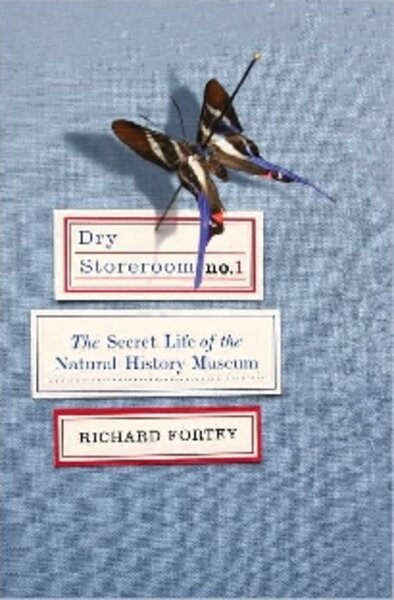Dry Storeroom No. 1
Loading...
To read Dry Storeroom No. 1 is to take a long, meandering journey through the back alleys and byways of London’s Natural History Museum. Your guide, Richard Fortey, the museum’s retired senior paleontologist, has set out to detail “the achievements, hopes and frustrations, virtues and failings of the scientists,” to “bring those invisible people into the sunlight.”
As he ambles through the museum, Fortey takes no little delight in sticking his head into offices and pulling open drawers containing row after row of specimens. It’s an effective way of telling his story: He moves through the museum’s different departments, lingering on diversions when it suits him and moving on when he’s ready.
His narrative is an amalgam, weaving together colorful anecdotes about the scientists and explanations of their work. On one page, we hear about the scientist who happened upon a lost Mozart manuscript and the cryptogam (ferns, mosses, and the like) expert who was mistakenly recruited to help decode Nazi cryptograms.
On the next, we learn about reclassifying fungi and the elimination of screwworm from North Africa. By combining the dual strands of personalities and livelihoods, Fortey is able to make the scientists – and the science – come to life. The many excellent illustrations and photographs sprinkled through the text also help to tell their stories.
Scientists behind closed doors
Leslie Bairstow is one noteworthy example. He began at the museum in the department of paleontology already equipped with a golden reputation. (Upon his appointment, a colleague rushed through the offices crying: “We’ve got Bairstow!”) Bairstow began collecting belemnite fossil specimens and studying them on ever finer scales. He accumulated specimens so prodigiously that, just to keep track of them, he developed a complicated reference system involving knitting needles.
And yet he never published a word: He was afflicted by such a “paralysing perfectionism” that it wasn’t until after his death that his successor wrote up and published Bairstow’s seminal work.
In choosing to profile contemporary scientists in addition to the deceased, Fortey set himself the unenviable task of selecting whom among his colleagues to include – and whom to leave out. He has erred, rather naturally, toward the inclusive side. While this gives much deserved exposure to many scientists, it also occasionally makes the book read more like an inventory than a narrative.
For the love of history
Fortey rarely lets pass more than a few pages without reminding readers of the importance of natural history. He emphasizes the ways that apparently esoteric studies benefit humanity at large: For example, scientists, armed with knowledge of a tiny parasitic wasp, prevented a famine by releasing huge numbers of the wasp to eliminate a mealy bug when the latter threatened the cassava harvest (sub-Saharan Africa’s most important food crop).
Yet Fortey is by no means utilitarian and he repeatedly emphasizes that “the contention that we should know our fellow inhabitants of the home planet seems to me beyond argument.” His delight in discovering and learning about even the smallest and most obscure of our fellow inhabitants enlivens this enjoyable book.
And yet there is also a sense of longing underlying Fortey’s narrative, a nostalgia for the old days of exploration and commitment to natural history. Fortey recognizes molecular biology for the advances it has brought, but he is clearly bemused by it, and fonder of the kind of science where “[p]eople still get their hands dirty with ordinary dirt.”
In a world where basic descriptive science is chronically underfunded, Fortey emerges as its champion.
The whole book has an elegiac tone; indeed, it is as much a defense of natural history as a celebration of it. It is clear that Fortey loves the Natural History Museum and especially those scientists “who have devoted their lives to collections – obdurate people, odd people, admirable people,” and this book is his tribute to them.
Sean Hughes lives and writes in Seattle.






